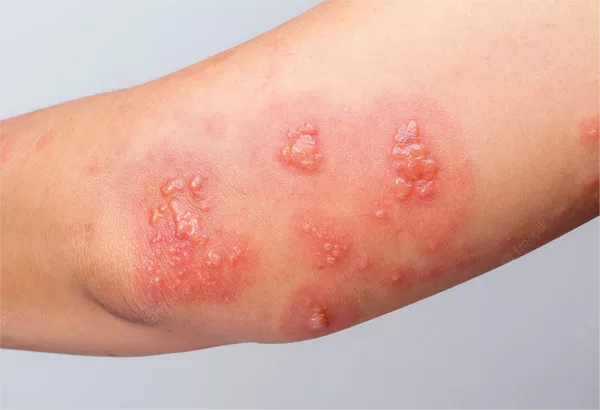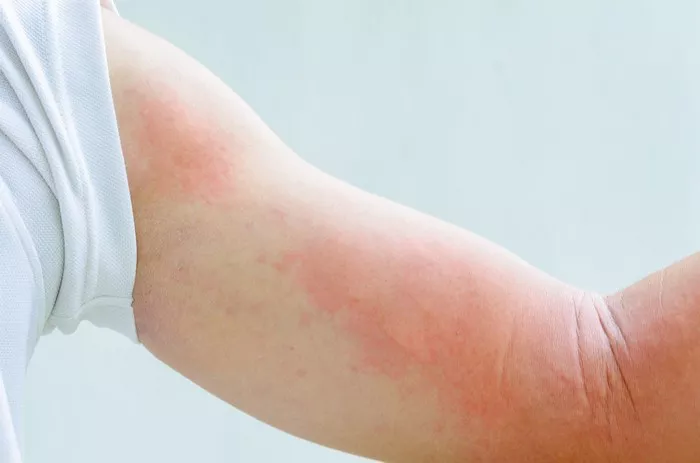Shingles, also known as herpes zoster, is a painful skin condition caused by the reactivation of the varicella-zoster virus (VZV). This virus also causes chickenpox. While shingles primarily affects those who have had chickenpox, it can be concerning for others, particularly those who have not had chickenpox or the chickenpox vaccine. Understanding when a person with shingles is contagious is essential for preventing the spread of the virus.
What Is Shingles?
Shingles occurs when the dormant varicella-zoster virus reactivates in the body. This can happen years after a person has recovered from chickenpox. The exact reason for this reactivation is not fully understood, but it is believed to be related to a weakened immune system.
Symptoms of Shingles
Shingles can cause a range of symptoms, including:
- A painful rash that typically appears on one side of the body
- Blisters that can ooze and crust over
- Itching or tingling in the affected area
- Fatigue and general discomfort
- Fever and chills
- Headache
The rash usually follows the path of a nerve, often appearing on the torso or face. The pain can be severe, and some people may experience complications, including postherpetic neuralgia, which is persistent pain after the rash has healed.
Understanding Contagiousness
Shingles is not directly contagious in the same way that chickenpox is. However, the varicella-zoster virus can be transmitted from a person with shingles to someone who has never had chickenpox or the chickenpox vaccine. This transmission occurs through direct contact with the fluid from the blisters of the shingles rash.
Who Is at Risk?
Individuals Who Have Not Had Chickenpox: Anyone who has never had chickenpox is at risk of contracting the virus from someone with shingles.
Pregnant Women: A pregnant woman who has never had chickenpox can develop chickenpox if exposed to someone with shingles.
Individuals with Weakened Immune Systems: Those with compromised immune systems, such as cancer patients or people on immunosuppressive medications, are more susceptible.
SEE ALSO: Does Medicaid Pay for Shingles Vaccine?
When Is a Person with Shingles Contagious?
A person with shingles can spread the varicella-zoster virus from the time the rash appears until the blisters have crusted over. This period typically lasts about 7 to 10 days.
Stages of Shingles Contagiousness
Before the Rash Appears: A person with shingles may not be contagious before the rash appears, but they can still experience prodromal symptoms, such as pain, itching, or tingling. At this stage, they are not shedding the virus and cannot spread it.
Rash Development: Once the rash develops, the person becomes contagious. The virus spreads through direct contact with the fluid from the blisters. It is crucial to keep the rash covered to prevent transmission during this time.
Crusting Stage: Once the blisters have crusted over, the person is no longer considered contagious. This usually occurs within 7 to 10 days after the rash appears. At this point, it is safe for the person to interact with others.
Transmission of the Virus
How Does the Virus Spread?
The varicella-zoster virus can spread through:
Direct Contact: Touching the rash or blisters of an infected person can transmit the virus.
Airborne Transmission: While shingles itself is not airborne, the varicella-zoster virus can be airborne in a chickenpox case. Thus, if someone has shingles and their rash is covered, the risk of spreading is lower.
Precautions to Prevent Spread
Cover the Rash: Keeping the shingles rash covered helps prevent direct contact with the blisters.
Avoid Close Contact: Individuals with shingles should avoid close contact with those who are at risk, such as pregnant women, infants, and immunocompromised individuals, until their rash has crusted.
Hand Hygiene: Frequent hand washing and using hand sanitizers can help prevent the spread of the virus.
Avoid Touching the Rash: Those with shingles should avoid scratching or touching their rash to reduce the risk of spreading the virus to other parts of their body or to others.
Postherpetic Neuralgia and Shingles
After the shingles rash has healed, some individuals may experience postherpetic neuralgia (PHN). This condition causes severe pain in the areas where the rash was present. PHN can last for weeks, months, or even years after the rash has cleared. While the risk of transmitting the virus decreases after the rash has crusted over, it is essential for those who have had shingles to monitor their symptoms and seek medical advice if necessary.
Vaccination and Prevention
Shingles Vaccine
Vaccination is the best way to prevent shingles. The shingles vaccine reduces the risk of developing shingles and its complications. The Centers for Disease Control and Prevention (CDC) recommends the following:
Shingrix: This is a recombinant shingles vaccine that is highly effective. It is given in two doses, with the second dose administered two to six months after the first.
Zostavax: This is a live attenuated vaccine that is less commonly used now but was the first vaccine developed for shingles.
The vaccine is recommended for adults aged 50 and older, regardless of whether they have had shingles in the past.
Who Should Get Vaccinated?
Individuals Over 50: Everyone in this age group should consider getting vaccinated.
Individuals with a History of Shingles: Even those who have had shingles can benefit from vaccination to reduce the risk of future occurrences.
Immunocompetent Adults: Those with healthy immune systems should get vaccinated to prevent shingles.
Conclusion
Understanding when a person with shingles is contagious is essential for preventing the spread of the varicella-zoster virus. A person with shingles is contagious from the time the rash appears until the blisters have crusted over, which typically takes 7 to 10 days. Taking precautions, such as covering the rash, practicing good hygiene, and avoiding close contact with high-risk individuals, can help prevent transmission.
Vaccination is the most effective way to reduce the risk of shingles and its complications. The Shingrix vaccine is highly effective and recommended for adults over 50. By staying informed and taking preventive measures, individuals can protect themselves and others from the discomfort and potential complications associated with shingles.
For more information about shingles, vaccinations, and preventive measures, you can visit the following resources:
Centers for Disease Control and Prevention (CDC): Shingles (Herpes Zoster)
National Institute of Allergy and Infectious Diseases (NIAID): Shingles Overview
American Academy of Family Physicians (AAFP): Shingles Prevention
By following the guidelines above, individuals can better understand shingles and take proactive steps to manage their health effectively.
Related topics:



























